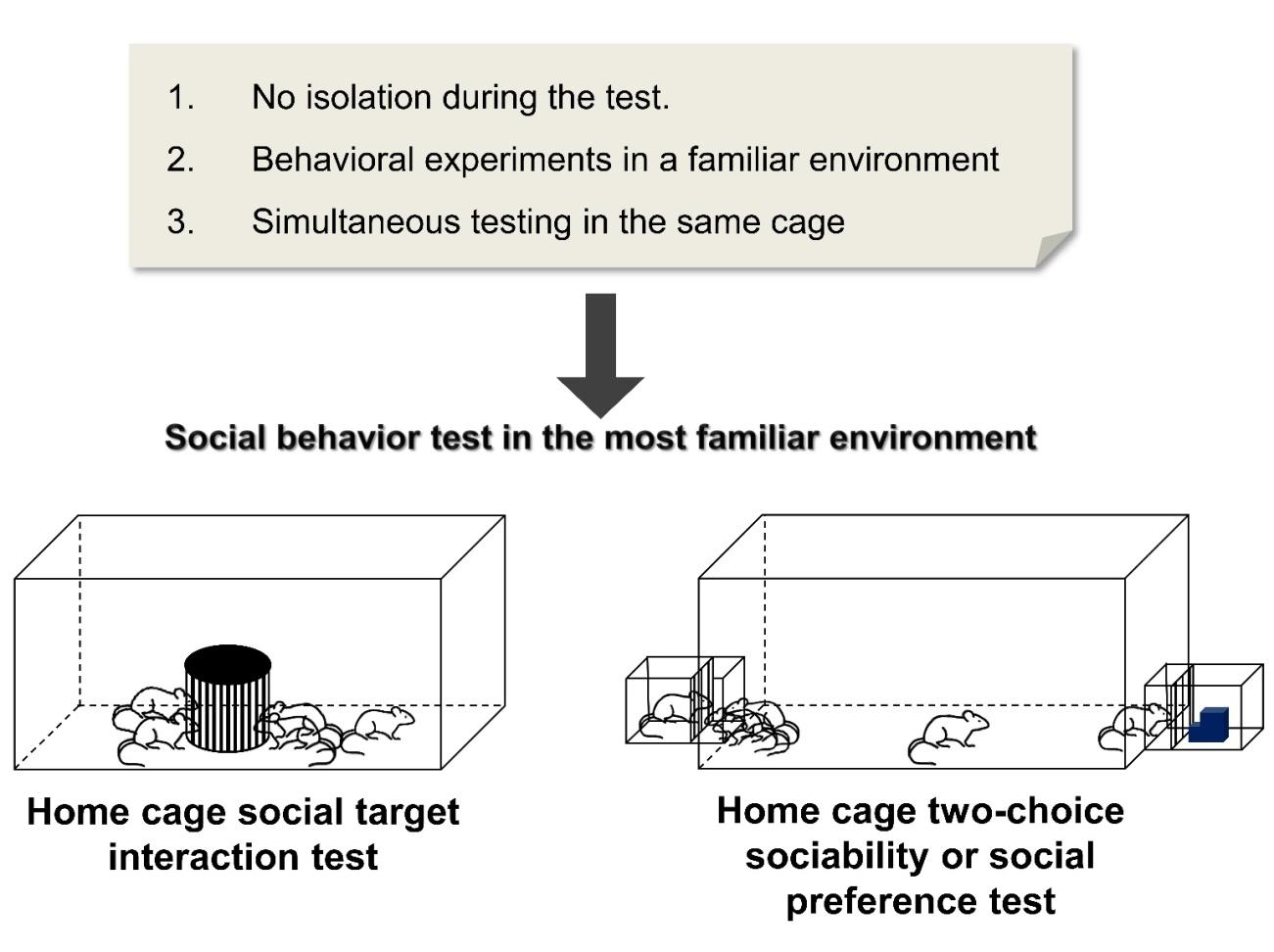Articles
Article Tools
Stats or Metrics
Article
Original Article
Exp Neurobiol 2019; 28(2): 247-260
Published online April 30, 2019
https://doi.org/10.5607/en.2019.28.2.247
© The Korean Society for Brain and Neural Sciences
Social Interaction Test in Home Cage as a Novel and Ethological Measure of Social Behavior in Mice
Do Gyeong Kim†, Edson Luck Gonzales†, Seonmin Kim, Yujeong Kim, Keremkleroo Jym Adil, Se Jin Jeon, Kyu Suk Cho, Kyoung Ja Kwon*, and Chan Young Shin*
Department of Neuroscience, School of Medicine and Center for Neuroscience Research, Konkuk University, Seoul 05029, Korea.
Correspondence to: *To whom correspondence should be addressed.
Chan Young Shin, TEL: 82-2-2030-7834, FAX: 82-2-2049-6192
e-mail: chanyshin@kku.ac.kr
Kyoung Ja Kwon, TEL: 82-2-454-5630, FAX: 82-2-2049-6192
e-mail: neuro11@kku.ac.kr
†These authors contributed equally to this work.
Abstract
Sociability is the disposition to interact with one another. Rodents have a rich repertoire of social behaviors and demonstrate strong sociability. Various methods have been established to measure the sociability of rodents in simple and direct ways, which includes reciprocal social interaction, juvenile social play, and three-chamber social tests. There are possible confounding factors while performing some of these tasks, such as aggression, avoidance of interaction by the stimulus mouse, exposure to a new environment, and lengthy procedures. The present study devised a method to complement these shortcomings and measure sociability as a group in the home cage setting, which prevents group-housed mice from isolation or exposure to a new environment. The home cage social test can allow high-throughput screening of social behaviors in a short amount of time. We developed two types of home cage setup: a home cage social target interaction test that measures sociability by putting the wire cage in the center area of the cage and a home cage two-choice sociability and social preference test that measures both sociability or social preference by putting cage racks at opposite sides of the cage. Interestingly, our results showed that the two types of home cage setup that we used in this study can extract abnormal social behaviors in various animal models, similar to the three-chamber assay. Thus, this study establishes a new and effective method to measure sociability or social preference that could be a complementary assay to evaluate the social behavior of mice in various setup conditions.
Graphical Abstract

Keywords: Home cage, Sociability, Novel environment, Social test


